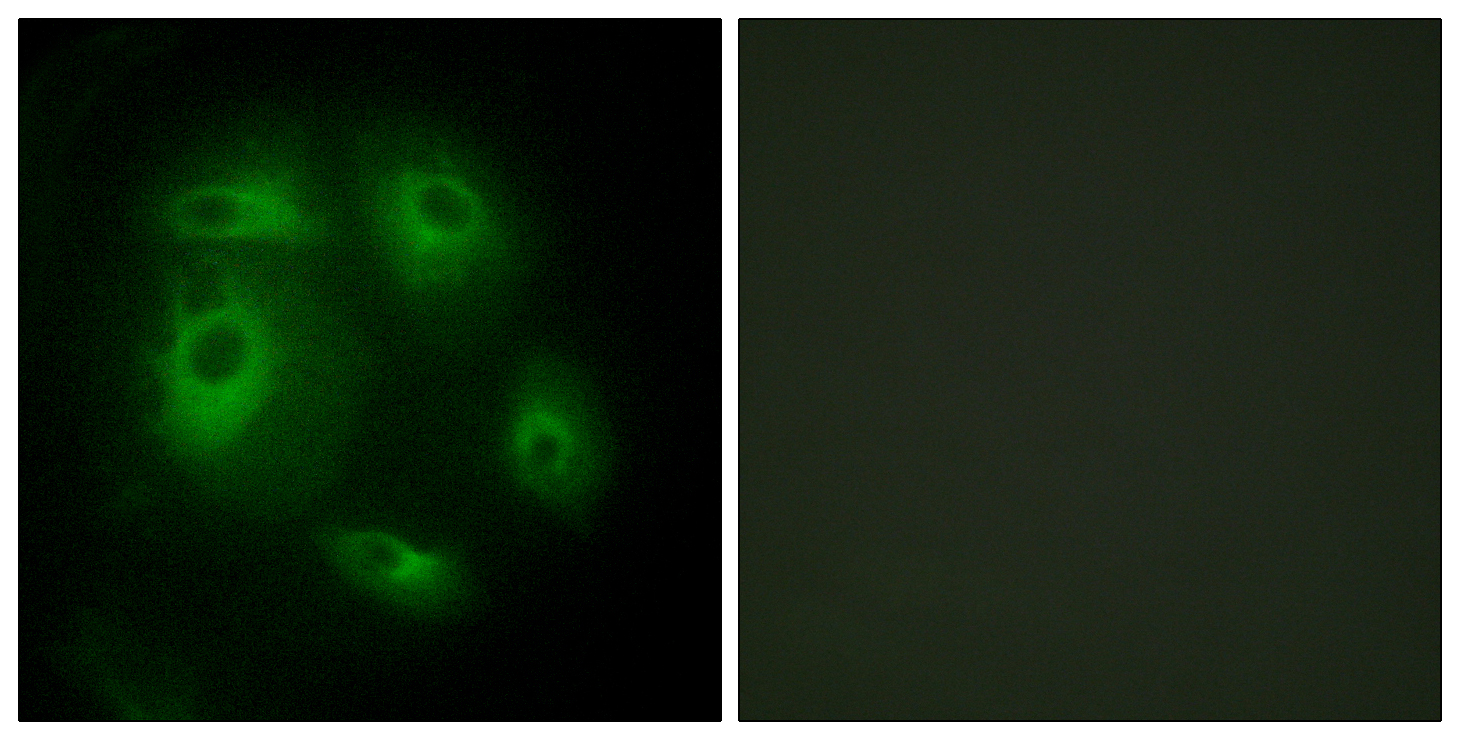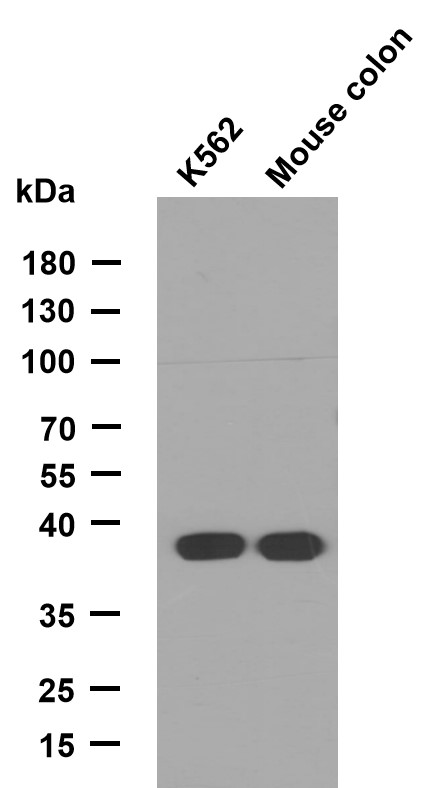DLEC1 Polyclonal Antibody
- Catalog No.:YT1357
- Applications:IHC;IF;ELISA
- Reactivity:Human;Rat;Mouse;
- Target:
- DLEC1
- Gene Name:
- DLEC1
- Protein Name:
- Deleted in lung and esophageal cancer protein 1
- Human Gene Id:
- 9940
- Human Swiss Prot No:
- Q9Y238
- Mouse Swiss Prot No:
- Q8BLA1
- Immunogen:
- The antiserum was produced against synthesized peptide derived from human DLEC1. AA range:1-50
- Specificity:
- DLEC1 Polyclonal Antibody detects endogenous levels of DLEC1 protein.
- Formulation:
- Liquid in PBS containing 50% glycerol, 0.5% BSA and 0.02% sodium azide.
- Source:
- Polyclonal, Rabbit,IgG
- Dilution:
- IHC 1:100 - 1:300. IF 1:200 - 1:1000. ELISA: 1:10000. Not yet tested in other applications.
- Purification:
- The antibody was affinity-purified from rabbit antiserum by affinity-chromatography using epitope-specific immunogen.
- Concentration:
- 1 mg/ml
- Storage Stability:
- -15°C to -25°C/1 year(Do not lower than -25°C)
- Other Name:
- DLEC1;DLC1;Deleted in lung and esophageal cancer protein 1;Deleted in lung cancer protein 1;DLC-1
- Molecular Weight(Da):
- 196kD
- Background:
- The cytogenetic location of this gene is 3p21.3, and it is located in a region that is commonly deleted in a variety of malignancies. Down-regulation of this gene has been observed in several human cancers including lung, esophageal, renal tumors, and head and neck squamous cell carcinoma. In some cases, reduced expression of this gene in tumor cells is a result of aberrant promoter methylation. Several alternatively spliced transcripts have been observed that contain disrupted coding regions and likely encode nonfunctional proteins.[provided by RefSeq, Mar 2016],
- Function:
- alternative products:At least six differentially spliced products may exist,disease:Defects in DLEC1 may be a cause of breast cancer.,disease:Defects in DLEC1 may be a cause of esophageal cancer [MIM:133239].,disease:Defects in DLEC1 may be a cause of primary lung cancer [MIM:211980]. In 33% of lung, esophageal and renal cancer cell lines and primary cancers, there is a lack of functional transcripts and an increase in alternatively spliced non-functional transcripts; the gene itself is not altered.,disease:Defects in DLEC1 may be a cause of renal cancer.,function:May act as a tumor suppressor by inhibiting cell proliferation.,sequence caution:Intron retention.,tissue specificity:Expressed in all tissues examined. Expression is highest in prostate and testis.,
- Subcellular Location:
- Cytoplasm .
- Expression:
- Expressed in all tissues examined. Expression is highest in prostate and testis.
- June 19-2018
- WESTERN IMMUNOBLOTTING PROTOCOL
- June 19-2018
- IMMUNOHISTOCHEMISTRY-PARAFFIN PROTOCOL
- June 19-2018
- IMMUNOFLUORESCENCE PROTOCOL
- September 08-2020
- FLOW-CYTOMEYRT-PROTOCOL
- May 20-2022
- Cell-Based ELISA│解您多样本WB检测之困扰
- July 13-2018
- CELL-BASED-ELISA-PROTOCOL-FOR-ACETYL-PROTEIN
- July 13-2018
- CELL-BASED-ELISA-PROTOCOL-FOR-PHOSPHO-PROTEIN
- July 13-2018
- Antibody-FAQs
- Products Images

- Immunofluorescence analysis of HeLa cells, using DLEC1 Antibody. The picture on the right is blocked with the synthesized peptide.

- Immunohistochemistry analysis of paraffin-embedded human prostate carcinoma tissue, using DLEC1 Antibody. The picture on the right is blocked with the synthesized peptide.



